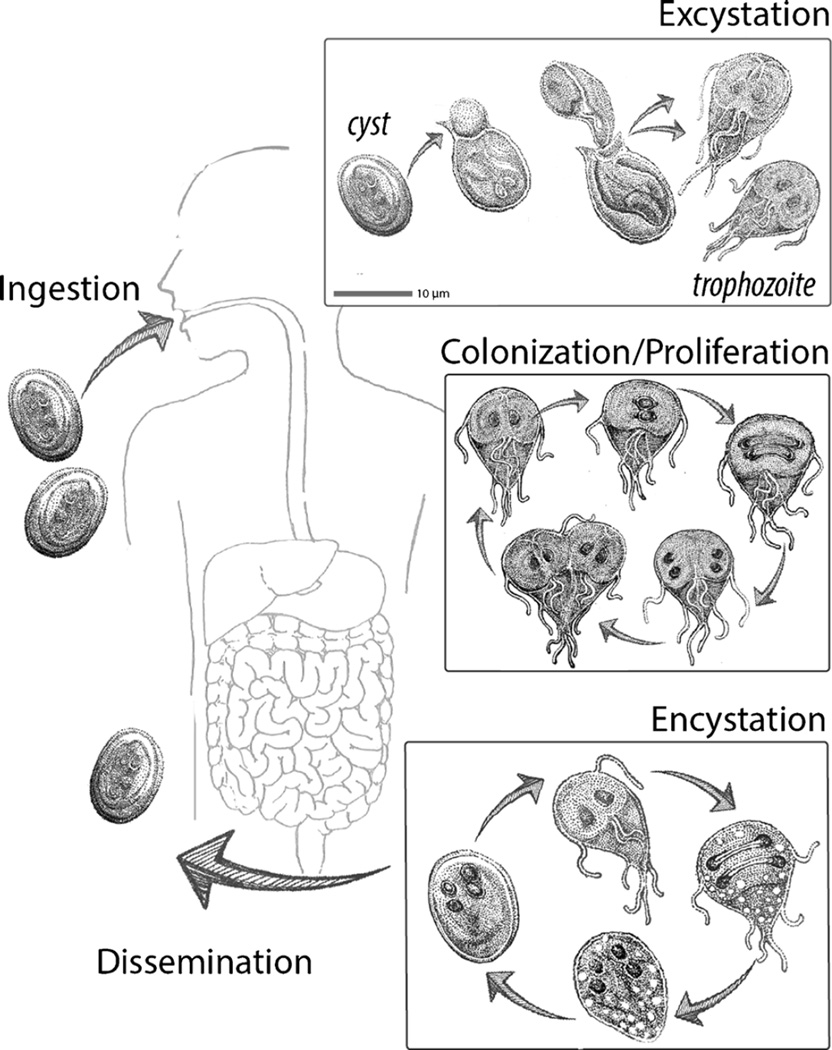Fig. 1.
The Giardia life cycle in the human host. Giardia has two life cycle stages: the flagellated trophozoite that attaches to the intestinal microvilli and an infectious cyst that persists in the environment. Cysts are ingested by the host and excyst after transiting through the stomach. Excysting trophozoites complete cell division, and then trophozoites search for suitable sites for intestinal attachment and colonization using flagellar motility. To proliferate in the small intestine and resist peristaltic flow, trophozoites attach to the villi using the ventral disc and only briefly detach to complete cytokinesis. Trophozoites thus attach, divide, and proliferate and colonize the small intestine. Based on environmental cues, partially divided trophozoites encyst and mature cysts are shed in feces. This facilitates the dissemination of parasites and the infection of new hosts. Giardia is zoonotic, and this life cycle occurs in all mammalian hosts

